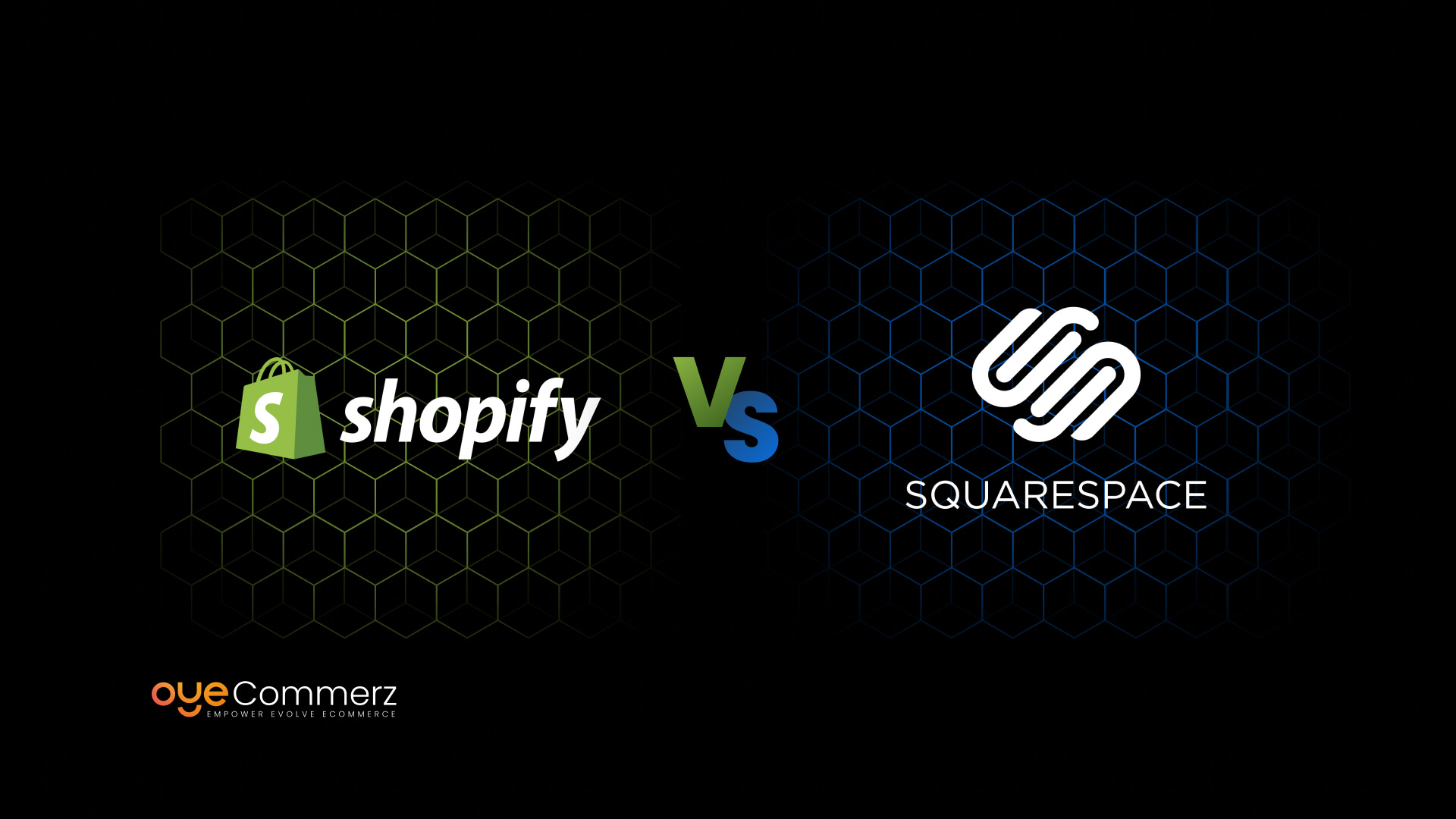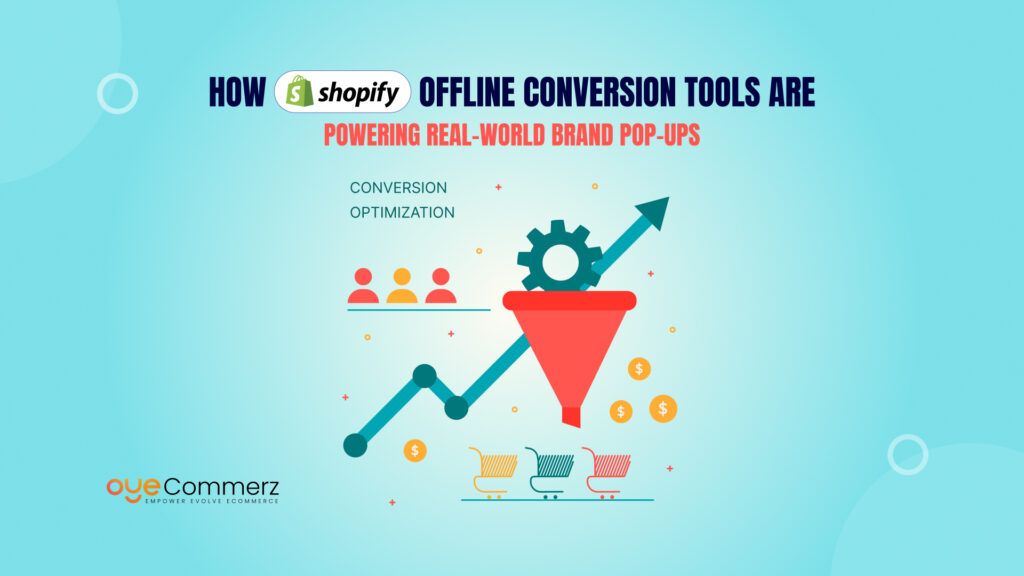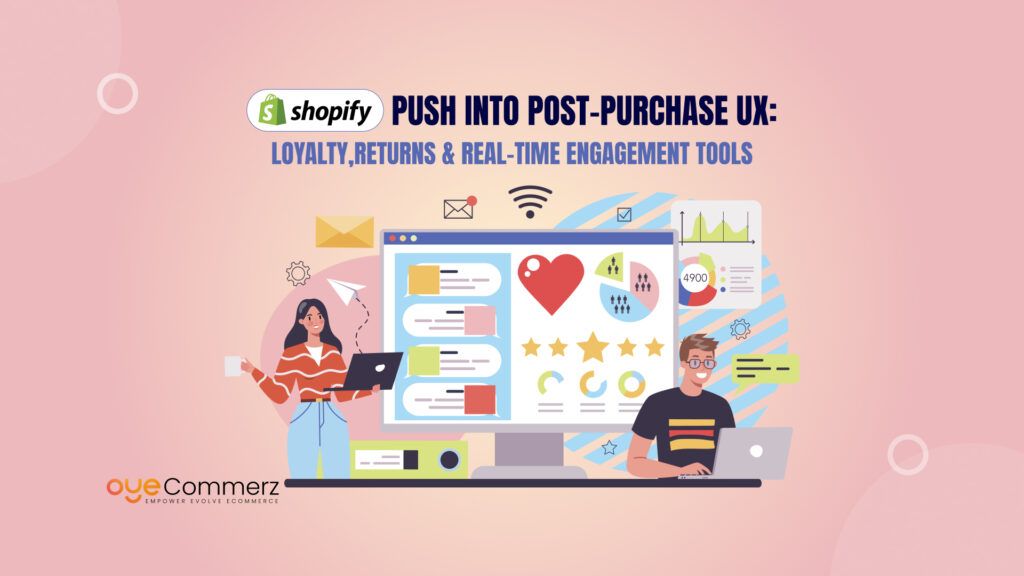Explore our Squarespace to Shopify Migration Services today and let’s build a brighter future for your eCommerce success together. Contact us now to get started!
Table of Contents
ToggleEssential Shopify Statistics You Need to Know in 2024
- Shopify Generated $7 Billion in 2023
A remarkable statistic about Shopify is its impressive revenue of $7 billion in 2023. This figure has risen by over $5 billion since 2015, highlighting the platform’s consistent growth over the years.
- Shopify Has Contributed to $444 Billion in Global Economic Activity
Shopify has significantly impacted the global economy, contributing $444 billion to date. This number is expected to grow as more businesses adopt Shopify to manage their online stores.
Top Read: Managing Your Shopify Store: Tips for Former Squarespace Users
Understanding Squarespace vs Shopify (Pros and Cons)
Squarespace
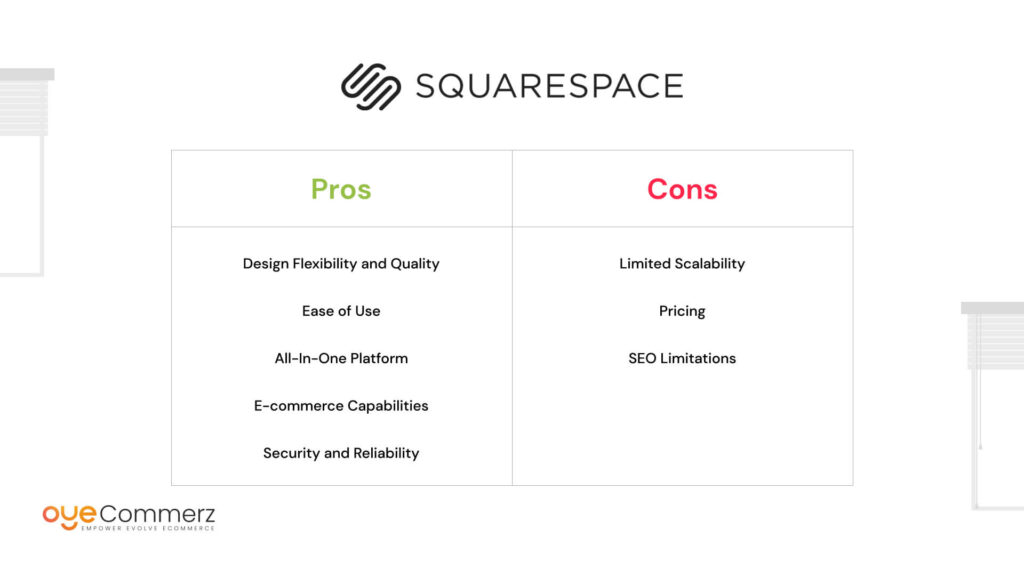
Squarespace is known for its stunning design templates and user-friendly interface, making it a favorite among creatives and small businesses looking to establish an aesthetically pleasing online presence. Below, we explore the pros and cons of Squarespace.
Pros of Squarespace
Design Flexibility and Quality
- Beautiful Templates: Squarespace offers a wide range of high-quality, professionally designed templates. These templates are not only visually appealing but also responsive, ensuring that your website looks great on all devices.
- Customization Options: With its drag-and-drop editor, Squarespace allows users to customize their websites without needing any coding knowledge. The platform also supports custom CSS for more advanced customization.
Ease of Use
- User-Friendly Interface: Squarespace’s intuitive interface makes it easy for beginners to build and manage their websites. The platform provides a seamless experience from start to finish, with straightforward navigation and editing tools.
- Comprehensive Tutorials and Support: Squarespace offers extensive tutorials, guides, and customer support, making it easier for users to resolve issues and learn how to maximize the platform’s features.
All-In-One Platform
- Hosting and Domain Management: Regarding the Web presence, Squarespace offers hosting and domain management services in the packages, so that it would not be very difficult to make the site go live.
- Built-In Features: The platform is loaded with default functionalities like blogging tools, tools to make a store under one roof, rich tools for SEO, and many more rather than relying on plugins and extensions.
E-commerce Capabilities
- Integrated E-commerce Tools: Squarespace also offers strong e-commerce features through which one can sell products, and track the inventory as well as the payment option. These are some of the integrated tools that help make the business easy to run especially when operating an online store.
Security and Reliability
- SSL Certificates: All Squarespace websites are armed with a complimentary SSL certificate, so, your website visitors are safe.
- Reliable Uptime: Some of the strengths of Squarespace are, that the company’s uptimes are always good which means your website is always available to users.
Cons of Squarespace
Limited Scalability
- Less Suitable for Large Stores: However, Squarespace is a fantastic platform for small to medium stores and it isn’t specific for e-commerce stores that are large and extremely complicated requiring many features.
- Limited Payment Gateway Options: There is a limited number of payment gateways that Squarespace can integrate compared to other websites’ builders which might not be suitable for certain business models.
Pricing
- Higher Cost for Advanced Features: At the same time, the cost per monthly plan, while still relatively modest, quickly accumulates if you require advanced or commercial-grade features of an e-commerce website. This might be a consideration, especially for businesses that are operating on a small amount of capital.
SEO Limitations
- Basic SEO Tools: However, value-adds for SEO optimization are available and found to be basic compared to those found in WordPress or dedicated SEO software. Squarespace might appear quite limited for the most hedonist SEO users, whereas basic settings make site optimization much easier.
Shopify
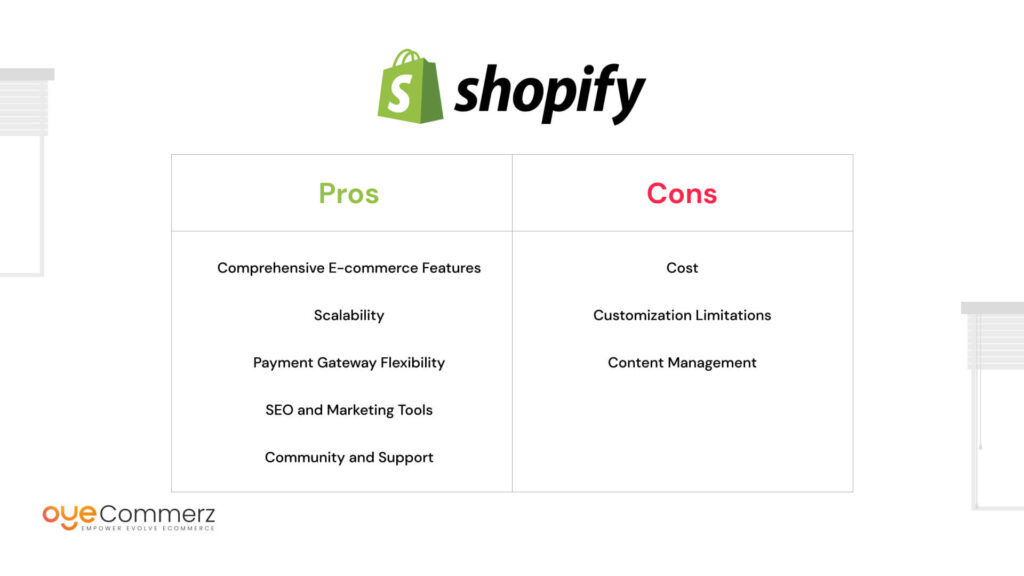
Shopify was an e-commerce company established with the primary intention of providing its clients with retailing solutions for Internet stores and retail point-of-sale terminals. It is valued for its capabilities to cover quite a wide number of aspects related to e-commerce and its flexibility. Below are the advantages, and disadvantages of using Shopify-online store builder.
Pros of Shopify
Comprehensive E-commerce Features
- Extensive App Store: Shopify has a vast app store containing thousands of apps and integrations meaning that the user can extend the functionality to the store beyond imagination. Most, importantly, with over 3,200 apps available, Shopify has the best app ecosystem encompassing everything from marketing and SEO to inventory and shipping.
- Advanced E-commerce Tools: Shopify has all the means that you need to run your store – inventory, orders, customers, and analytics to sort them out. As many of these tools are aimed at optimizing activities and expanding the scale of the company’s activities.
Scalability
- Designed for Growth: That is why the infrastructure of Shopify can work with large traffic and transactions, which will be suitable for providing services to growing companies. This can range from a small start-up company all the way to a large company and it can be easily executed.
- Multiple Sales Channels: Shopify gives you a way to sell in several ways online, in-store/using the Shopify point of sale, in social media, or through other platforms such as Amazon or eBay. This feature of the multi-channel helps an organization in reaching more of its target population.
Payment Gateway Flexibility
- Shopify Payments and Third-Party Gateways: Shopify compliance with various payment processors means its own processor, Shopify Payments has reasonable charges for its transactions. This optimistic arrangement makes them free to select the most suitable payment processing service.
SEO and Marketing Tools
- Built-In SEO Features: Shopify has excellent SEO options such as able to edit title tags, meta descriptions, and URLs. It also has features that allow you to connect with many third-party SEO tools such as Google Analytics and Google Search Console.
- Marketing and Sales Tools: In addition to that, Shopify has other essential marketing features such as email marketing, social accounts integration, and discounts to help you attract and retain customers.
Community and Support
- Extensive Support Resources: Like most businesses when it comes to support, Shopify has both phone, email and live chat support for clients available 24/7. Furthermore, it provides a large number of tutorials, references, and forum where people interested in the project’s PHP library and users and developers who are directly or indirectly involved in the project can ask questions and receive support.
Cons of Shopify
Cost
- Monthly Fees and Transaction Fees: Shopify has one of the relatively higher prices as compared to other platforms, and this can put off some businesses especially due to the monthly fees and other transaction fees except for using Shopify Payments. It has several plans available and while the paid plans are slightly expensive as you add the applications and other tools.
- App Costs: Some of the other more superior features are the third-party apps, which again are costly to integrate into the software. This may raise the general cost of operating your online store.
Customization Limitations
- Learning Curve for Advanced Customization: Shopify interfaces well for simple configurations, yet complex changes usually involve a working understanding of Liquid (Shopify’s noble prototyping language) as well as possibly other coding languages. This can be a challenge to users especially if they are in a group of non–technical personnel.
- Theme Limitations: Furthermore, while using Shopify, one is likely to find various themes of their preference, however, customization beyond this may involve paying for higher-end themes or consulting with a web developer.
Content Management
- Blogging Features: Shopify is very limited in what it offers in blogging and is not nearly as advanced as WordPress or Squarespace. if you reflect heavily on content marketing, you might say that, for instance, Shopify’s blogging features are quite limited.
- Limited Flexibility for Non-E-commerce Sites: So, Shopify is good when it comes to selling but it is not so good for websites that are not of the m-commerce type. Small businesses requiring more flexibility in the repertoire of the CMS stand in front of rather limited options in Shopify’s non-e-commerce applications.
What’s Right for Your Business?
In comparing Squarespace and Shopify, the decision to go for either of the two may be selected based on the need, objective, and availability of the business. Here are some factors to consider when making your decision:
When to Choose Squarespace
- Focus on Design and Aesthetics: If your business values design and aesthetics as the leading priority, you truly need Squarespace for your organization. It is useful for artists, photographers, and creatives due to its beautiful templates and easy-to-use design tools.
- Simple E-commerce Needs: For companies that require minimal functionality of online sales, which is needed if you plan to sell just a few products or services Squarespace’s built-in e-commerce solutions are perfectly suitable. It’s very good for small businesses, clothing shops, and individual entrepreneurs.
- Budget Constraints: On the one hand, Squarespace could prove more economical for businesses that don’t rely on their online stores’ extraordinary functionality or numerous connections with other services. 99% off for a lifetime is its best offer and the factor that covers hosting and domain services makes it easy to plan for the costs.
- Ease of Use and Support: A platform that is easy to use and not fully overwhelming, especially for a first-timer will work better with Squarespace’s easy-to-use design and the web filled with guidelines and useful tips. This becomes advantageous since the handling of the platform is not complex and can be used by almost anybody.
- When to Choose Shopify
- Extensive E-commerce Needs: For more sophisticated e-business needs like if you are running a large inventory, processing many sales per hour, or require more customized sales tools, Shopify is better. On the one hand, the application store of the provider is very large and the opportunities of e-commerce meet a great number of requirements.
- Scalability and Growth: That is why if you expect a large number of orders or have plans to expand your company, the platform’s settings are suitable for development. Due to its efficiency in dealing with large numbers of traffic as well as sales, it is suitable for both retail and large enterprises.
- Scalability and Growth: If you think that your business is going to grow or has ambitions to grow then Shopify has been built to help it grow. Due to its capacity to accommodate large traffic and sales volumes, it can be used both by young developing businesses and large companies.
- Multi-Channel Selling: Shopify will serve businesses who have a need to sell their products both online and offline, through their own website and social media accounts, as well as third-party marketplaces and physical retail stores. This flexibility aids in the optimization of the coverage ground and hence the sales.
- Advanced Customization: If your business needs huge customization or if there are special technical requirements, then Shopify’s versatility and possibilities to apply third-party developers and designers will be helpful. The platform is best suited for organizations as it would need technical input to design as per the organization’s needs.
- SEO and Marketing Focus: Since businesses that depend on SEO and sophisticated marketing methods’ success are more vulnerable to platforms like Shopify, it offers strong SEO capabilities and marketing connections. Due to the fact that the platform intends to govern e-commerce, it also enables traffic and general sales.
Also Read: How to Create a Migration Timeline for Moving from Squarespace to Shopify
Enhance Your E-Commerce Business with OyeCommerz!
Ready to take your eCommerce business to the next level? At OyeCommerz, we specialize in seamless eCommerce migration, tailored to your industry—be it pharmacy, jewelry, fashion, cannabis, or sports. Our experts ensure a smooth transition with minimal downtime and maximum online presence.
Contact to Migrate your Site to Shopify Now
Conclusion
Squarespace and Shopify are two tightly connected and rather powerful platforms, with their ‘peculiarities’ and ‘pros and cons’. Squarespace truly excels in its homepage templates, its user interface, and its built-in offerings, it is highly recommended for graphic artists, photographers, and others with simple requirements for their sites. In contrast, Shopify has been widely used with enhanced e-commerce solutions, its ability to grow with businesses’ needs and accommodate those with larger operations.
All in all, whether a given platform is the most suitable for your business depends on the objectives of your firm, its financial capabilities, and the level of technical specialization of your staff. With the help of the tips described above, it will be easier to understand the key advantages and disadvantages of each of the platforms and make a decision that will allow achieving the desired goals and dreams of being online successfully.

